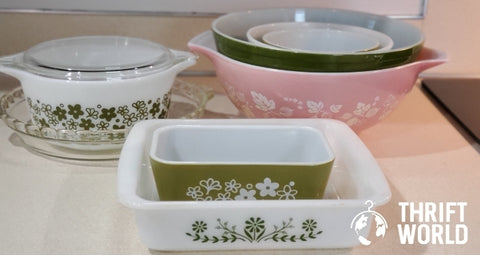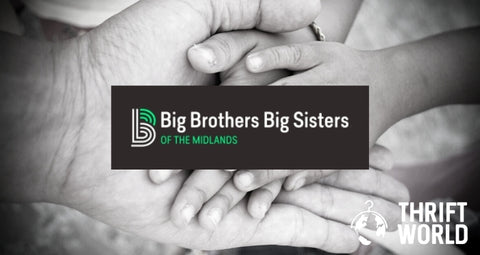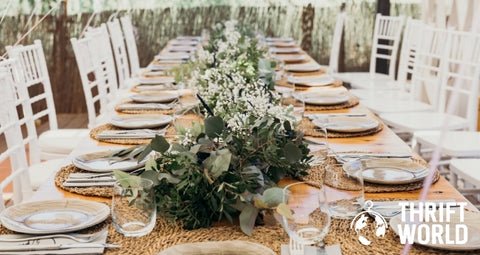From your great grandmother to your mother, many generations you know might have owned a piece of Pyrex. This colorful glass kitchenware has been a staple piece in American households for over a century. Many people love it for its durability, while others love it for its colorful designs.
There are Pyrex collectors who are in search of vintage and collectible Pyrex pieces. The best thrift shops in Omaha professionals want to share some insight into why Pyrex is valuable and which pieces are worth hundreds of dollars.
THE HISTORY OF PYREX
Pyrex was first created in Corning, N.Y. in 1908. However, it did not look like the modern pieces look. Pyrex was first created at Corning Glass Works, where thermally resistant glasses were made for single lanterns. One employee named Jesse Littleton brought a sawed-off battery jar home to his wife, who used it to bake a cake.
Corning soon figured out their glass could benefit more than the industrial world but also kitchens. In 1915, the company started to sell Pyrex bakeware to many housewives. What made Pyrex so successful was that it was durable, resisted temperature changes and didn’t discolor.
Then Corning bought a glass factory in Charleroi, Pa. that was capable of producing opal glass and thus started producing opal colored Pyrex. However, this colored Pyrex was discontinued in the late 1980s. Today, the Charleroi factory still continues to manufacture Pyrex and many people are collecting these vintage pieces.
WHY SHOULD YOU THRIFT PYREX?
Pyrex gained popularity because of its borosilicate glass that gave it durability and longevity. However, it then switched to using a soda-lime glass. This made the value of vintage Pyrex skyrocket. Now some Pyrex pieces are selling as much as $3,000.
When looking for Pyrex at the best thrift shops in Omaha, try to find Pyrex from the 1915s to late 1970s. Look for pieces that are desirable and in great condition. Here is a list of Pyrex patterns that are worth some good money.
FIVE VALUABLE PYREX PATTERNS TO THRIFT
The Pink Daisy pattern
The Pink Daisy Pyrex pattern was produced from 1956 to 1963. This Pyrex pattern and the Snowflake was the first to be printed on a solid color. Its clear lids made it one of the best selling patterns. Now it is a favorite collectible piece for Pyrex junkies.
The Snowflake pattern
As stated above, the Snowflake Pyrex pattern is also one of the first Pyrex printed on a solid color. These pieces are turquoise colored and with snowflakes. This pattern is one of the longest-running patterns that ran from 1956 to 1967.
Rainbow stripes
The Rainbow Stripes Pyrex was manufactured from 1965 to 1967. There were four bowls, but only three were sold together. The set includes pink, sandalwood and blue. The yellow bowl was sold separately.
Gooseberry pattern
This Pyrex pattern was one of the first four printed patterns to be released on the opal Pyrex. It was manufactured from 1957 to 1966. This pattern came in different colors, including pink on white, white on pink, black on white and black on yellow.
Butterprint pattern
The Butterprint Pyrex was manufactured from 1957 to 1968. This pattern features an Amish couple, roosters and corn. It is considered one of the earliest prints of Pyrex. The distinctive design makes it one of the most recognizable Pyrex prints.
SHOP AT ONE OF THE BEST THRIFT STORES IN OMAHA
Thrift World has a full selection of vintage clothing, jewelry, furniture and kitchenware in store and online. We have locations in Omaha and Independence, Mo. Shop in-store or online.




Comments (1)
I have one teacup that is Pyrex. It is white with turquoise print. What is the value of one teacup?